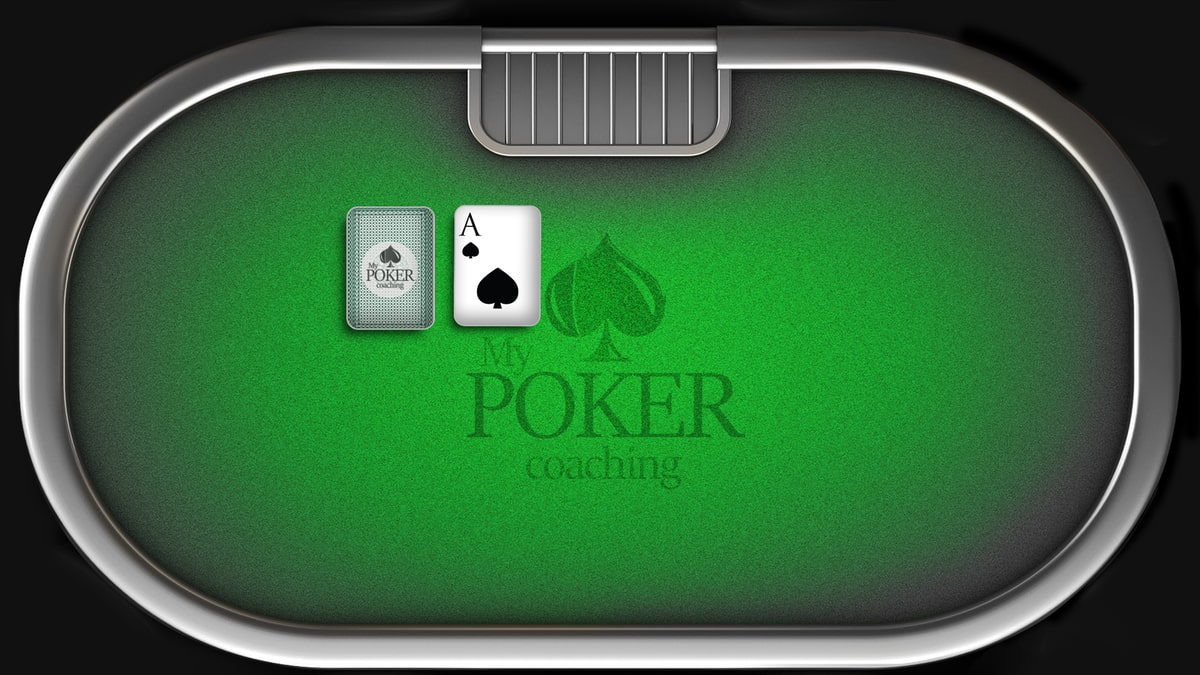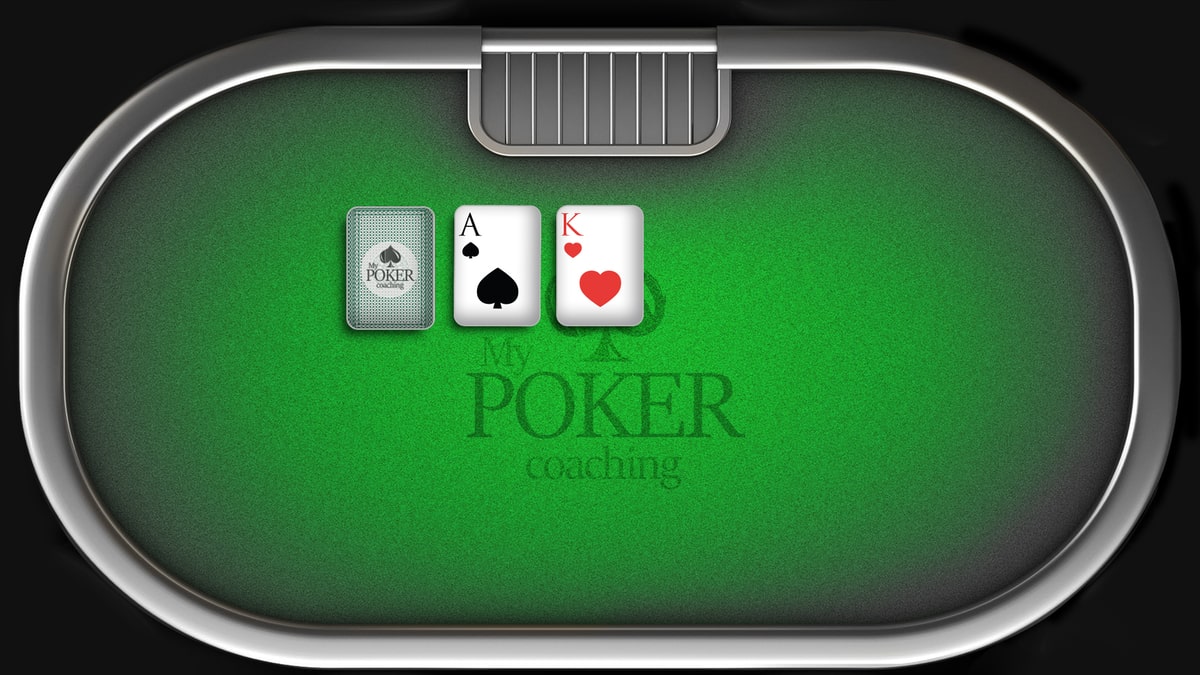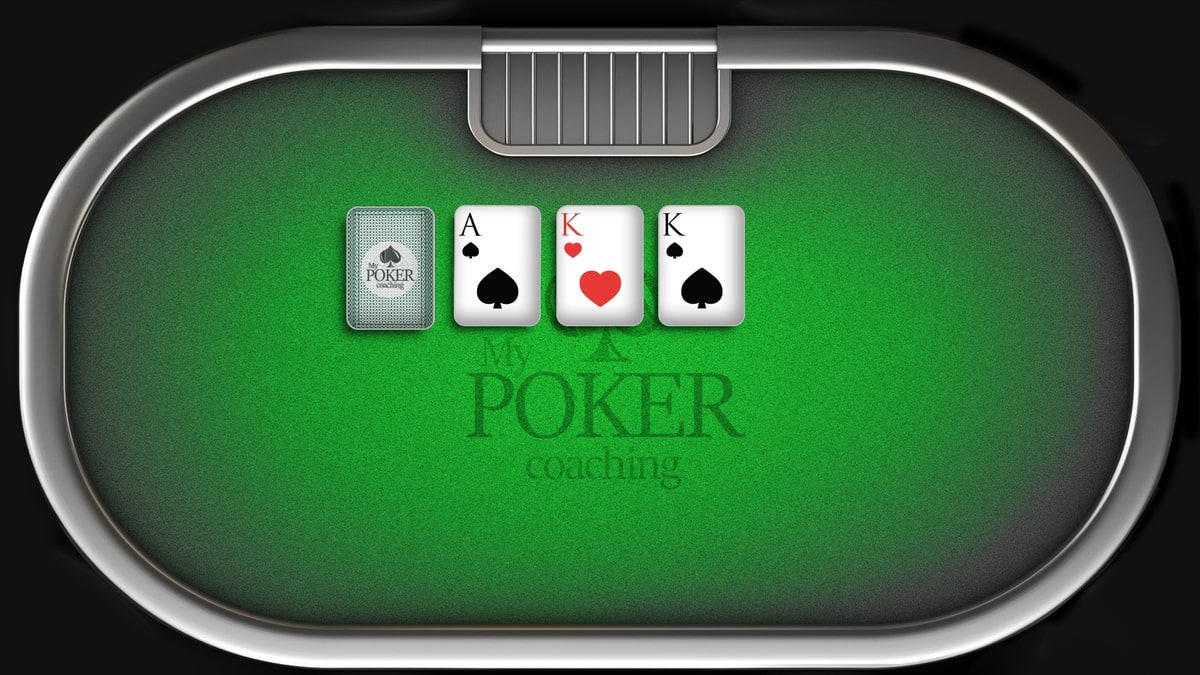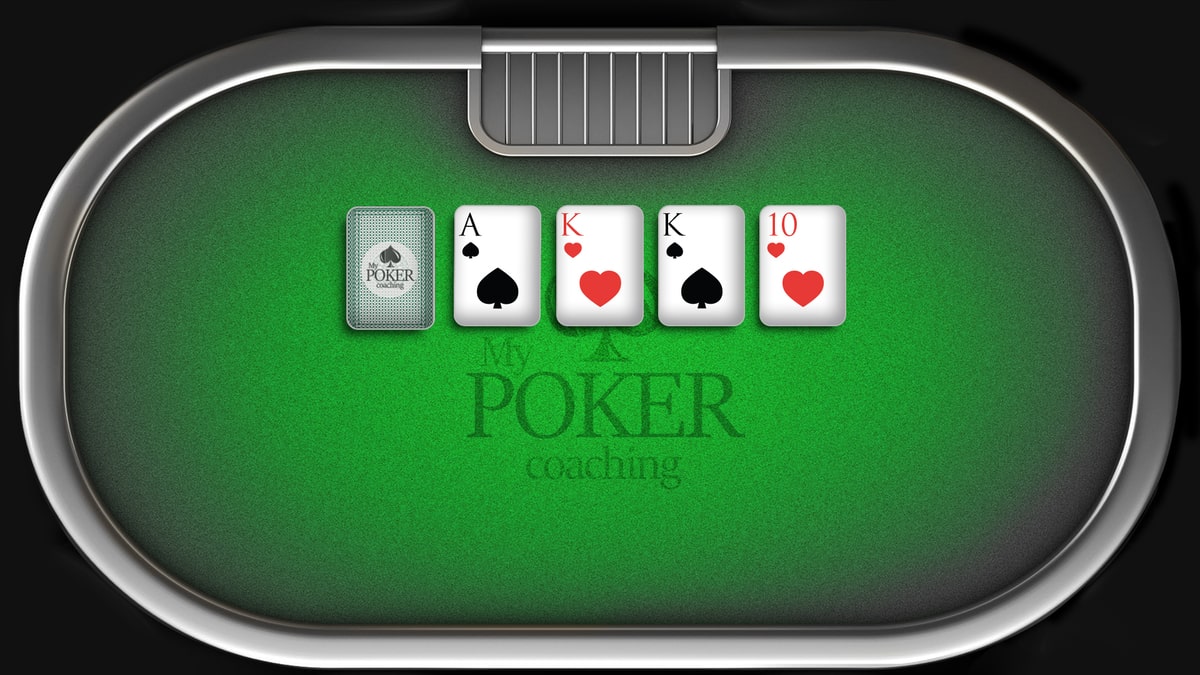5 Card Stud Poker Rules – Learn How to Play Five Card Stud Game

Most modern poker players immediately think of Texas Hold’em whenever they hear the word “poker” spoken, as this is easily the most popular of all types of poker in the world today. However, there used to be a time when Texas Hold’em wasn’t even played, and games like 5 Card Stud and 7 Card Stud dominated the landscape.
Five Card Stud is a poker game that used to be spread in every poker room across America at one point, but its popularity has significantly diminished in recent years.
While Seven Card Stud continues to be spread quite often in certain poker rooms, the five card variation can mostly be found only in private games these days.
Yet, you never know when being familiar with Five Card Stud rules might come in handy, so I am going to teach you how to play this poker variation and give you some basic Five Card Stud strategy tips that could make you some serious money under the right circumstances.
After all, a good poker player is always looking for a good spot, and a juicy game of 5 Card Stud could be exactly what you have been looking for.
5 Card Stud Rules

The first thing you need to do to play 5 Card Stud Poker at some point is learn the game's basic rules.
If you have previously played 7 Card Stud, you will not have much trouble learning the rules of 5 Card Stud either, but even if you haven’t it should still be pretty easy to pick up.
Dealing Cards in Five Card Stud
A hand of 5 Card Stud starts with every player posting an ante bet, which is usually a small percentage of the big bet.
Once all players have posted antes, the dealer will deal each player two cards – one face down and one face up.
The face-up cards are compared, and the player with the lowest-up card must post the bring-in.
According to the rules of Five Card Stud, the bring in is usually worth 25% of the big bet.
In a $10/20 Five Card Stud Game:
- Ante would usually be $2 (it can vary depending on where you play)
- The bring-in would usually be $5
- The small bet is set at $10
- The big bet at $20
Once the bring in is posted, players take turns making bets in the first betting round, with small blind being the bet in play and all bets made in increments of one small bet.
Once all betting is completed, the dealer deals out the third card to each player, again facing up. Once more, a betting round ensues, with the player holding the strongest visible hand having the first action.
Once this betting round is completed, another face-up card is dealt. Another betting round ensues, but this time all bets are made in increments of one big bet.
The final betting round comes after the fifth and final card is dealt to all players, this time face up. The big bet is in play once more, and this betting round is followed by the showdown.
It is important to note that, like in most limit games, a maximum of four raises can be made per betting street, and all action goes from right to left on all betting streets.
5 Card Stud Betting Rules

Five Card Stud is practically always played as a limit poker game, which means betting limits are set before the game begins, and all bets must be made in given increments on each betting street.
If you are used to games like Texas Hold ’em or PLO, where you can make large bets and go all in, you will need to adjust your mindset and realize you can only bet so much on each 5 Card Stud betting street.
How much exactly? Let’s find out.
First Round of Betting in Five Card Stud

The first money to go into the pot in any 5 Card Stud hand are the antes, which are paid by each player at the table, and are usually worth about 10% of the big bet.
Once the first cards are dealt, the player with the weakest up card is forced to post the bring in, usually worth 25% of the big bet.
Now that the bring in is posted, the action starts to the left of the bring in, with each player given an opportunity to:
- Fold: Discard the cards and forfeit the pot.
- Call: Post 2x the bring in, completing the bring in and staying in the hand.
- Raise: Increase the size of the bet by one small blind. In a $1/2 5 Card Stud Game, the first raise would be up to $4, the next to $6, etc.
Every player in the hand must act on their cards before the action comes to the bring in. At this point, the bring in must decide whether to complete the bring in if there were only calls in front or call any raises that have been made.
The bring-in can also decide to fold cards even if only one other player completed, relinquishing the pot to the player who made the call.
It is important to remember that completing the bring in does not count as a raise but rather as a call, so an action in a Five Card Stud hand might go as follows:
- The bring-in posts $1
- The next player to act completes to $2
- The player next to act bumps it up to $4 (first raise)
- Another player raises to $6 (second raise)
- Finally, the last remaining player likes their hand a lot, so they make it $8 (third raise)
A maximum of four bets can be made on every street, which means the third preflop raise caps the action and forces other players to either call or fold. Regardless of how strong your hand might be, you will not be able to put in more than four small bets in the first betting round.
Third Street Betting in Five Card Stud

The third street is where things start to get interesting in Five Card Stud, as all players have two up cards for the first time in the game.
The dealer deals the third card to every player face up, which means there are now two cards in front of each remaining player that everyone at the table can see.
The player with the strongest up hand goes first on the third street. If no one shows a pair, the player with the highest up card plays first, and the action continues clockwise.
Third street is a small bet street, which means that the small bet is used as a basis for all betting and raising, and a maximum of four small bets can be put into play.
For example, if you are playing in a $2/4 game, the maximum raise will be $8 ($2 to $4, $4 to $6, and $6 to $8).
However, if a player shows a pair in their hand, they can start the action with a big bet instead, meaning they could fire out a $4 bet in the same game.
In this case, all raises can be made in big bet increments as well, which means you could bump it up all the way to $16 if you want to keep raising.
A player holding a pair face up can also decide to make a small bet instead, which dictates how the rest of third street action will go.
Fourth and Fifth Street Betting in Five Card Stud: The Big Bet Rounds

The betting pattern for fourth and fifth street in Five Card Stud is exactly the same on 4th and 5th street as it is on 3rd street, with the notable difference of all bets being made in big bet increments.
If I looked at the same $2/4 game earlier, the initial bet on 4th or 5th street would be $4, and up to three raises could be made on top of that, all the way up to $16.
Fourth street betting starts after all players are dealt their fourth card face up, while fifth street betting starts after all players are dealt their fifth card facing down.
On both the fourth and fifth street, the player showing the strongest three up cards is the one who goes first, and action continues clockwise from that player.
Once all betting is done on the fifth street, players must show their cards for the dealer to compare and decide which hand wins the pot.
Showdown in Five Card Stud: Determining the Winner

If a hand of Five Card Stud goes all the way and more than one player is still in play, the dealer will announce a showdown.
At showdown, all remaining players must turn up their two down cards and allow the dealer to determine the winner in accordance with the standardized poker hand rankings.
The winning hand will be pretty easy to determine, but to make the game flow without problems, allow the dealer to compare hands each time and determine the winner in full compliance with poker rules.
Make sure you show both your cards at showdown, as it is good etiquette to always do this, and ensure that the dealer has an easy job determining the winner.
How to Play Five Card Stud Poker: Strategy Tips

Now that you are fully familiar with the dealing and betting rules of Five Card Stud, you should be ready to play your first hand of the game.
However, just knowing the rules of poker does not make you an expert in it, and you should be aware of some basic 5 Card Stud strategies before you can start playing.
If you have a background in big-bet games like Texas Hold’em, PLO, or Short Deck, you should remember that the strategy for limit games is quite different.
Opportunities for bluffing are a lot more scarce in limit games, and there is a lot more information that’s clearly visible, which means you should be very careful in any bluffing attempts.
Here are a few useful Five Card Stud strategy tips and some basic ideas on how you might win more money playing this poker game.
Tip #1. Focus Is Everything
In almost all stud games, the main thing you need to improve is focus. In Hold'em, there is not much merit to staring at your opponents' cards unless you have X-ray vision.
In five card stud, though, this should be the first order of business.
As cards are dealt face up, you can get so much invaluable information just by paying attention. You can know that certain key cards have been folded, which can put you in a great spot.
Here’s a simple example to prove the point.
Let's say you saw a player muck a King early on, and you started the hand with a pair of kings (a very strong holding). Your opponent doesn't know this, as they only see one king.
By the fifth street, you end up with the board showing K 7 7 9, so you have a concealed two pair. Your opponent is showing K 10 10 6 and bets into you.
In this scenario, you can raise with confidence, knowing that the only way they can have you beat is if they have one of the remaining two tens as their face-down card. It’s impossible for them to have better two pair.
This is just one example. As you get better at keeping track of folded cards, you’ll be able to make some very good decisions based on the information you have and your general knowledge of poker odds.
Another example is where it is clear someone is drawing to a spade flush, but you know that four spades were folded on earlier streets. You can put the maximum pressure on them by betting and raising, knowing their odds of improving are much lower than what they might think (if they aren’t paying attention).
Tip #2. Don’t Get Too Fancy

While bluffing is an essential part of five card draw poker, don’t take things to the extreme. There is no need to get fancy and try to bluff people off of strong hands just for the sake of it.
One of the first lessons of how to play 5 card stud is:
If you can’t beat what they’re showing, fold!
This doesn’t apply in 100% of the cases, but for the most part, you don’t want to be drawing against someone who you know has you beat. Sometimes pot odds will dictate it’s right to go another street, but don’t get stubborn trying to improve and take down their trips.
Also, don’t raise with your drawing hands against their made hands.
It simply won’t work because they can see you’re drawing. If you’re showing three disjointed hearts and they have a pair of kings up, there is zero value in raising. You’re just building the pot in hopes of outdrawing, which is never a good poker strategy.
Tip #3. Starting Hands Selection
I’m definitely no expert in this game, so I can’t give you an extensive guide on how to pick the best starting hands in five card stud poker.
That said, the logic of stud games still applies here, which means that split pairs will be good starting hands. Of course, the higher – the better. Split pocket aces through jacks are monsters in this game as they’ll often win even unimproved.

Suited aces and broadway cards are also good candidates. These are open-ended hands that give you some flexibility. You can catch quite a few cards to improve.
Even non-suited hands like KQ and KJ are solid starters.
Smaller suited connectors aren’t very powerful as you won’t be making that many straights and flushes in this game. Remember, there are only five cards in total you can use, which severely limits your op
Tip #4. Be Mindful of Your Image
Limit poker games like Five Card Stud are all about minimizing your mistakes and using the slight edges to your advantage. If you play the game well, you are probably playing pretty tight and in accordance with your cards, only bluffing occasionally.
Once everyone else is aware of this, you should be able to use this image to your advantage and get away with slightly more bluffing.
If you can pick up the antes and bring-in even once an hour by using your image and representing you have that rolled-up pocket pair when you don’t, your bottom line will change dramatically.
Using your image to your advantage and never showing bluffs is a great way to make more money playing 5 Card Stud with minimal risks.
Tip #5. Know Who to Attack
Games like Five Card Stud tend to attract quite a few nits, which is an ideal opportunity to get away with murder and win huge pots even when you aren’t supposed to.
If you are very mindful of your opponents, you will quickly realize who is making the big folds and getting rid of hands that most other players would easily call with.
Once you find such nitty players, you should be able to steal some pots off them as soon as you are dealt a card that seems like it might have improved you, and they brick out on third or fourth street.
Remember, you don’t actually have to have a big hand, you just have to convince your opponents that you do.
Is Learning How to Play 5 Card Stud Worth It?
One of the best questions you can ask yourself today is whether learning 5 Card Stud strategy and rules is worth it. The truth is that most players won’t get a real opportunity to play this game, as most casinos and even the best online poker sites don’t really spread it anymore.
However, you may be able to find mixed games or private cash games where this game is spread, or even convince your private game group to learn and play Five Card Stud.
The truth is that 5 Card Stud is quite a fun game to play and especially attractive as you can play for “higher stakes” than Texas Hold’em, which could be interesting to your group.
At the end of the day, the more poker games you can play, the more opportunities you give yourself to find a good spot in the future, so give 5 Card Stud a shot and add this game to your existing repertoire.







